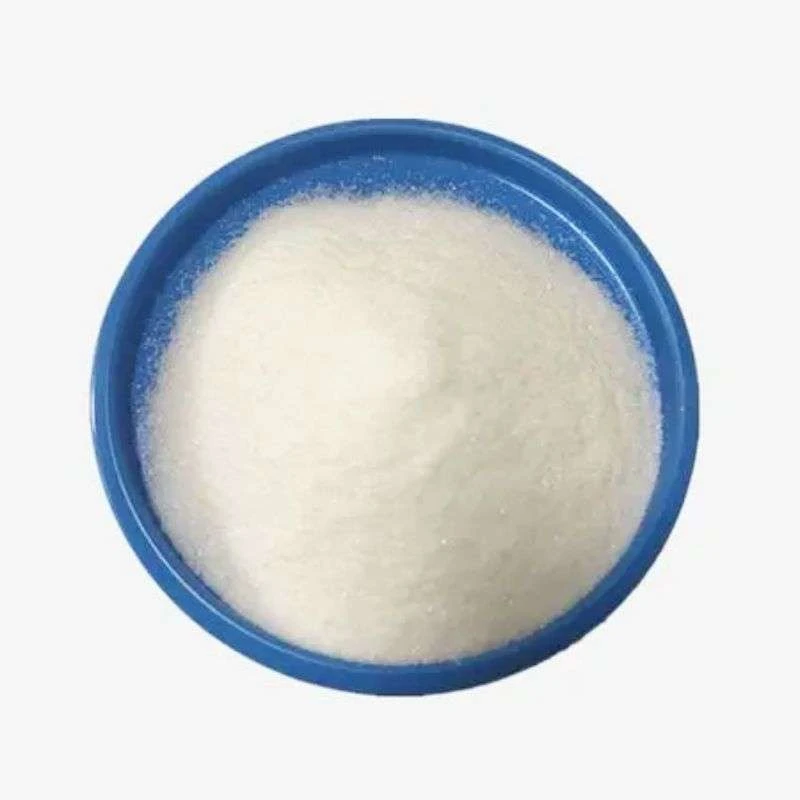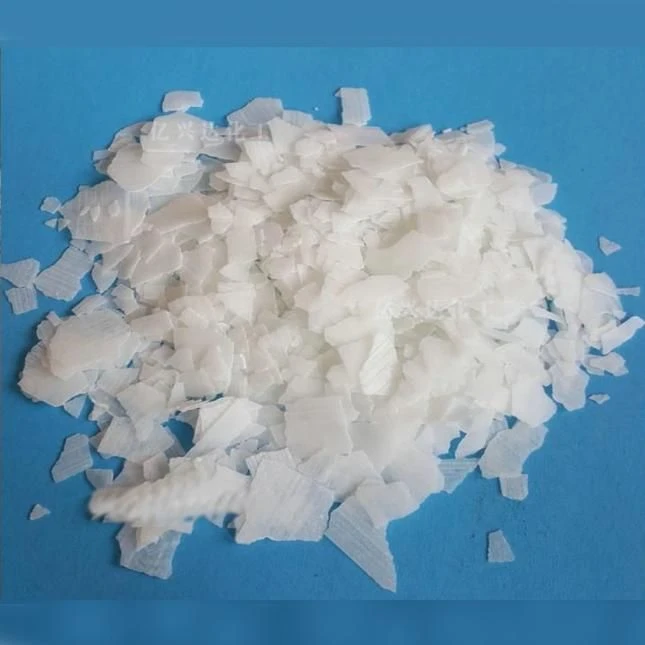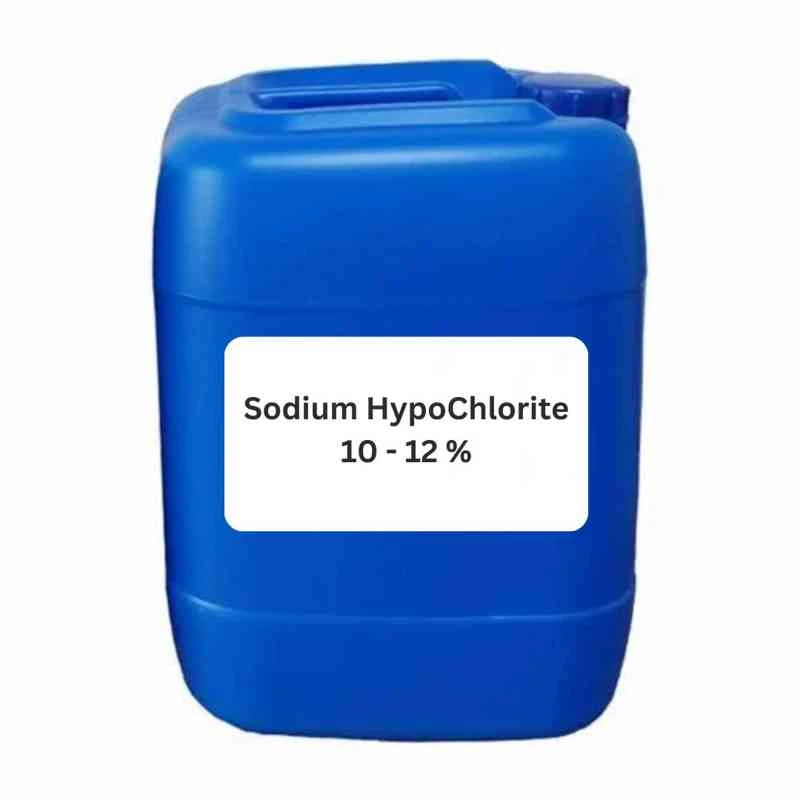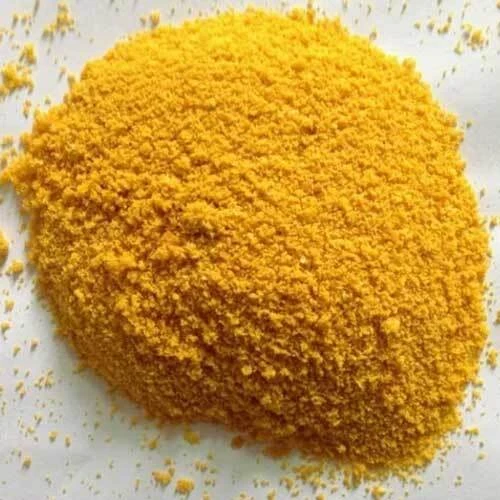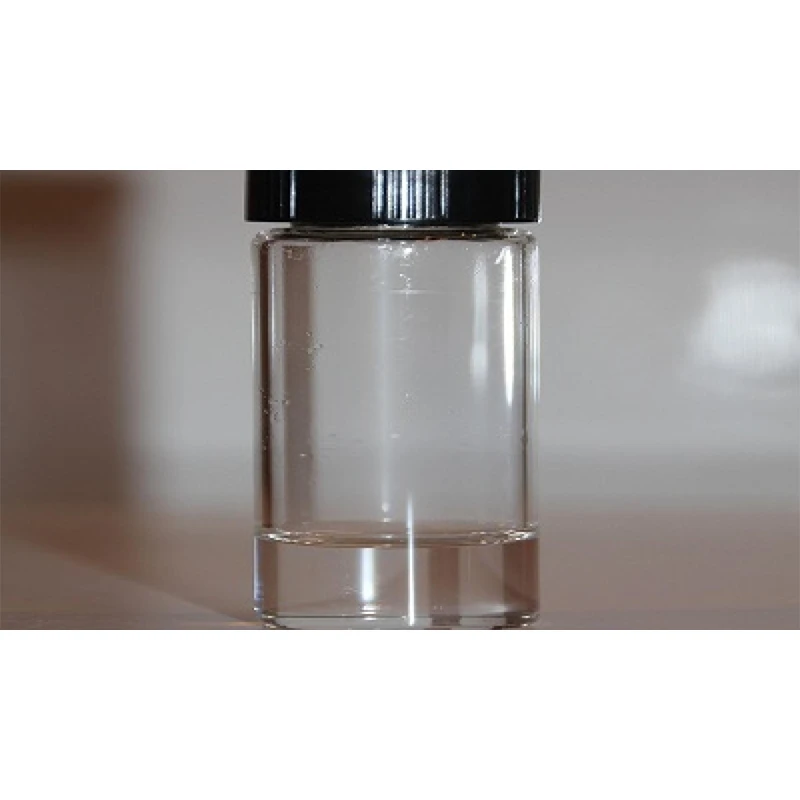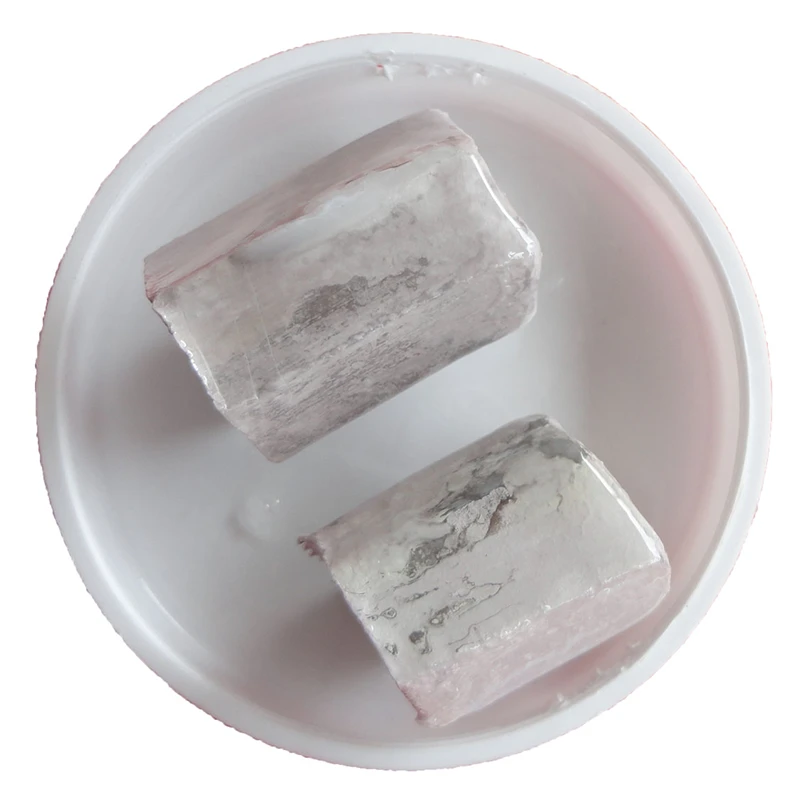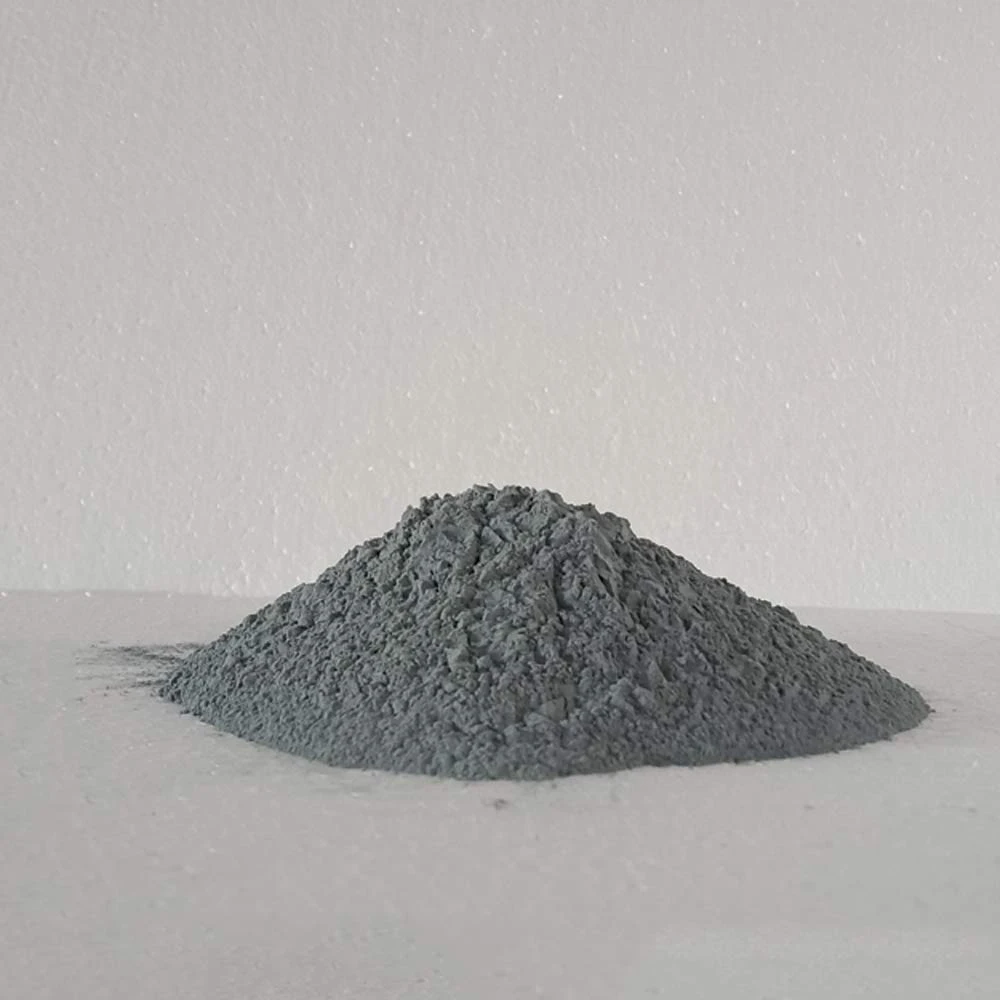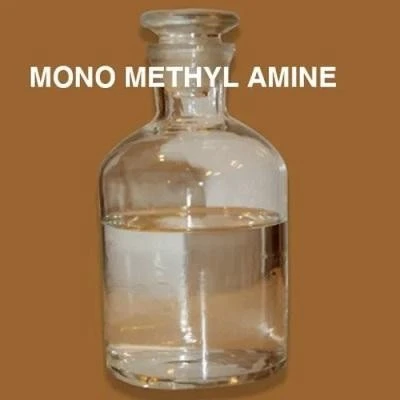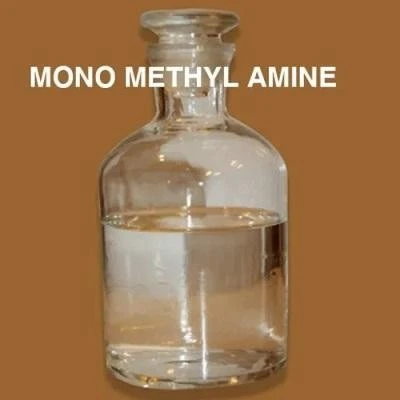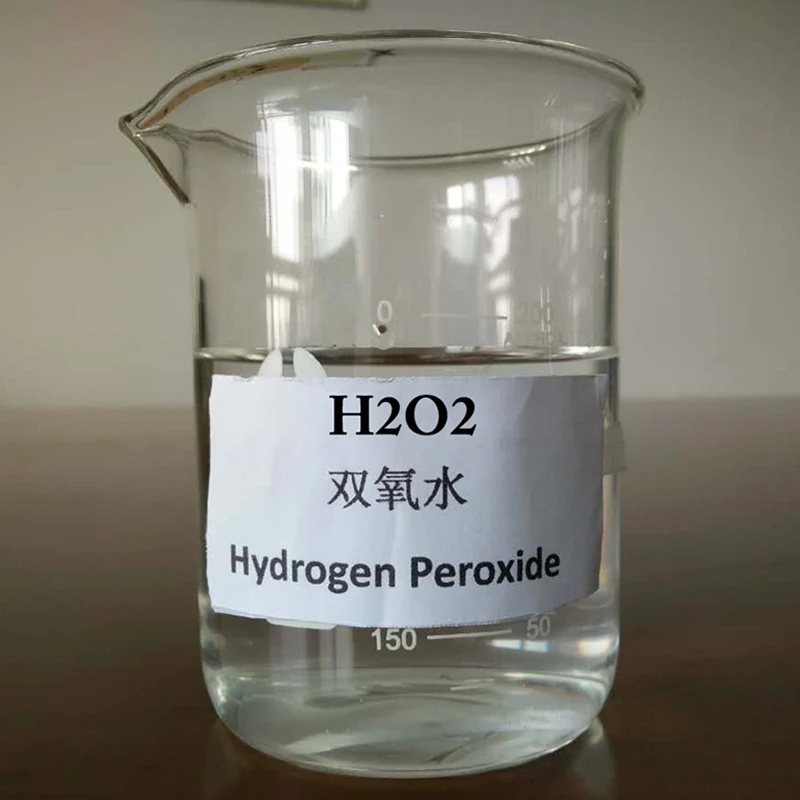


Buy Atrazine for Sale: Effective Herbicide, Great Prices
Understanding Atrazine: A Strategic Asset for Modern Agriculture
In the intricate landscape of modern agriculture, the demand for effective and reliable weed management solutions is paramount to ensuring crop yield and economic viability. Among the extensive array of herbicides available, atrazine for sale stands out as a cornerstone selective herbicide, widely utilized for its unparalleled efficacy in controlling a broad spectrum of annual broadleaf and grass weeds. Its critical role in the cultivation of major crops such as corn, sorghum, sugarcane, and turfgrass cannot be overstated, as it provides both pre-emergent and early post-emergent control by inhibiting photosynthesis in susceptible plants. The global agricultural sector, driven by increasing population and demand for food, constantly seeks high-performance agrochemicals that deliver consistent results while adhering to stringent environmental and regulatory standards. Atrazine, as a triazine herbicide, operates by binding to the plastoquinone-binding protein in photosystem II of the chloroplast, thereby disrupting the electron transport chain and ultimately leading to plant death. This mechanism of action makes it particularly effective against weeds like lambsquarters, pigweed, velvetleaf, and various annual grasses, which can severely compete with cash crops for essential nutrients, water, and sunlight, leading to significant yield losses if left uncontrolled. Furthermore, the herbicide's residual activity in the soil offers extended protection, reducing the need for repeated applications and thus contributing to cost-efficiency and reduced labor input for farmers. The continuous advancements in formulation technology, from wettable powders (WPs) and flowables (SCs) to water-dispersible granules (WDGs), have significantly enhanced its handling characteristics, solubility, and bioavailability, making it a versatile tool adaptable to diverse farming practices and application methods, including broadcast, band, and directed sprays. As a leading supplier of agricultural chemicals, our focus on delivering high-quality atrazine herbicide for sale underscores our commitment to supporting sustainable and productive farming operations globally.
The evolving agricultural industry trends indicate a strong move towards integrated weed management (IWM) strategies, where herbicides like atrazine play a foundational role alongside cultural practices, crop rotation, and mechanical weed control. Despite its widespread adoption, the use of atrazine is subject to rigorous regulatory oversight, particularly concerning its potential environmental impact, primarily on water quality. Consequently, manufacturers and distributors of atrazine are increasingly focused on developing formulations that minimize off-target movement and enhance environmental safety profiles, while also providing comprehensive guidance on responsible application techniques. Innovations in granular and encapsulated forms, for instance, aim to reduce dust drift and improve targeted delivery, optimizing the product's performance while mitigating environmental risks. The market for agricultural chemicals is also experiencing shifts driven by climate change patterns, requiring herbicides that perform effectively under varying soil moisture conditions and temperature fluctuations. Atrazine's proven efficacy across a range of climatic zones and soil types further solidifies its position as a reliable choice for farmers worldwide. Beyond conventional large-scale farming, there's a growing interest in precision agriculture, where satellite imagery and drone technology are used to map weed infestations and apply herbicides with unprecedented accuracy. This precise application not only optimizes product usage but also minimizes environmental exposure, aligning with global efforts towards more sustainable agricultural practices. Our extensive experience in the chemical manufacturing sector positions us uniquely to provide a comprehensive understanding of these trends, ensuring that our offerings of atrazine for sale are not just products but integrated solutions tailored to the dynamic needs of modern agribusinesses seeking to maximize efficiency and environmental stewardship.
The Atrazine Manufacturing Process: Ensuring Purity and Performance
The production of high-grade atrazine for sale involves a sophisticated multi-stage chemical synthesis and formulation process designed to ensure unparalleled purity, efficacy, and consistency. The journey begins with the selection of premium raw materials, primarily cyanuric chloride, ethylamine, and isopropylamine, which serve as the fundamental building blocks for the triazine ring structure. The initial critical step involves the controlled reaction of cyanuric chloride with ethylamine, followed by a subsequent reaction with isopropylamine. This two-step amination process is meticulously managed under precise temperature and pressure conditions within specialized reactor vessels to ensure optimal conversion rates and minimize undesirable byproducts. The choice of reactor material, often high-grade stainless steel or glass-lined steel, is crucial to prevent contamination and ensure chemical inertness throughout the exothermic reactions. Post-synthesis, the crude atrazine undergoes a rigorous purification phase, which typically includes crystallization, filtration, and drying. Crystallization is a vital step where the synthesized atrazine is dissolved in a suitable solvent and then carefully cooled to allow the atrazine to precipitate out as highly pure crystals, separating it from impurities. Multiple recrystallization stages may be employed to achieve the desired purity level, often exceeding 97% for technical grade atrazine. The separated crystals are then subjected to advanced drying techniques, such as vacuum drying or fluid bed drying, to remove residual moisture and solvents, ensuring product stability and shelf life. Throughout these stages, advanced analytical techniques like High-Performance Liquid Chromatography (HPLC) and Gas Chromatography-Mass Spectrometry (GC-MS) are continuously employed to monitor reaction progress, assess purity, and detect any trace impurities, ensuring that the resulting active ingredient meets stringent internal and international specifications.
Following the synthesis and purification of the technical-grade active ingredient, the manufacturing process proceeds to formulation, transforming the raw atrazine into commercially viable products such as atrazine 50 WP (Wettable Powder), Suspension Concentrates (SC), or Water-Dispersible Granules (WDG). For wettable powders, the purified atrazine is micronized through advanced milling techniques to achieve a precise particle size distribution, typically in the range of 2-10 microns. This fine particle size is crucial for ensuring uniform suspension in water and optimal spray coverage in the field. The micronized atrazine is then blended with inert carriers, dispersing agents, wetting agents, and anti-caking agents in large industrial blenders. The selection and proportion of these co-formulants are critical to the product's physical stability, suspendability, and biological efficacy. For Suspension Concentrates, the atrazine active ingredient is finely ground in a wet milling process and suspended in water with the aid of specialized dispersing agents and thickeners to form a stable liquid suspension, which offers ease of handling and mixing. Each batch of formulated product undergoes extensive quality control checks, including tests for active ingredient concentration, pH, suspensibility, wet sieve analysis, particle size distribution, storage stability, and dissolution rate. These tests are conducted in accordance with international standards such as ISO 9001 for quality management, and specific pesticide analytical methods outlined by organizations like the AOAC International and CIPAC (Collaborative International Pesticides Analytical Council). Our state-of-the-art facilities and adherence to Good Manufacturing Practices (GMP) ensure that every kilogram of atrazine herbicide for sale we produce offers consistent performance and reliability. The meticulous control over each stage of the manufacturing process, from raw material sourcing to final packaging, underpins the superior quality and long service life—typically a shelf life of 2-3 years under proper storage conditions—of our atrazine products, making them a preferred choice for application in diverse agricultural sectors, including row crops, forestry, and non-crop land management, where consistent weed control and minimal environmental impact are paramount.

Technical Parameters and Formulations of Atrazine
When considering atrazine for sale, a comprehensive understanding of its technical parameters and various formulations is crucial for informed decision-making. Atrazine, chemically known as 6-chloro-N2-ethyl-N4-isopropyl-1,3,5-triazine-2,4-diamine, is a crystalline solid in its pure form with a molecular weight of 215.69 g/mol. Its melting point is approximately 173-175°C, and its vapor pressure is very low (3.0 × 10⁻⁵ Pa at 20°C), indicating minimal volatilization from soil surfaces, which contributes to its residual efficacy. The solubility of technical atrazine in water is relatively low, typically around 33 mg/L at 20°C, which necessitates its formulation into various commercial products to enhance dispersibility and applicability in aqueous spray solutions. This inherent low solubility in water is overcome through advanced formulation techniques that include the use of sophisticated surfactants and dispersing agents, allowing for the creation of stable suspensions or readily dissolving powders. The most common commercial formulations of atrazine include Wettable Powders (WP), Suspension Concentrates (SC), Water-Dispersible Granules (WDG), and less commonly, Emulsifiable Concentrates (EC) or solutions. For instance, atrazine 50 WP price considerations are directly tied to its active ingredient concentration—50% w/w (weight/weight)—meaning that 500 grams of active atrazine are present in every kilogram of product. This formulation is highly valued for its cost-effectiveness and ease of mixing in spray tanks, requiring good agitation to maintain suspension. Suspension Concentrates (SCs), typically containing 400-500 g/L of atrazine, offer the advantage of being liquid formulations, which eliminates dust during handling and mixing, and often provides superior suspensibility and less settling compared to WPs, leading to more uniform applications and reduced nozzle clogging. Water-Dispersible Granules (WDGs), often with higher concentrations like 90% w/w, are highly concentrated, dust-free, and easy to measure and mix, providing excellent storage stability and high efficacy due to their rapid dispersion in water.
The performance of atrazine herbicide for sale is also influenced by environmental factors such as soil type, organic matter content, and pH. Atrazine adsorption to soil colloids increases with higher organic matter content and clay content, and it is more tightly bound in acidic soils, which can affect its availability for weed uptake and its persistence. Its half-life in soil typically ranges from 30 to 90 days, varying significantly with environmental conditions, microbial activity, and application rate. This extended residual activity is a key technical advantage, offering season-long weed control from a single application in many scenarios, thereby reducing the need for costly repeat treatments or mechanical cultivation. Efficacy is also measured by the spectrum of weeds controlled, with atrazine being highly effective against key broadleaf weeds like common ragweed, velvetleaf, pigweed, and lambsquarter, as well as certain annual grasses such as foxtail and barnyardgrass. The selectivity of atrazine in corn, sorghum, and sugarcane is due to the crop's ability to metabolize the herbicide rapidly into non-toxic compounds, preventing phytotoxicity while susceptible weeds absorb and accumulate the active ingredient, leading to their demise. Beyond its chemical and physical properties, the comprehensive safety data for atrazine, including toxicology (e.g., LD50 values), ecotoxicology (e.g., aquatic toxicity to fish and invertebrates like LC50), and environmental fate, are extensively studied and regulated by authorities like the U.S. Environmental Protection Agency (EPA) and similar bodies globally. Companies providing atrazine for sale are mandated to provide detailed Material Safety Data Sheets (MSDS) and technical data sheets, outlining safe handling, storage, and application protocols, reflecting the product's rigorous testing and compliance with international standards for agricultural chemicals.

Application Scenarios and Technical Advantages of Atrazine
The versatility of atrazine for sale makes it an indispensable tool across numerous agricultural application scenarios, primarily focusing on weed control in major field crops. Its primary utility lies in pre-emergent applications, where it is applied to the soil surface before weed emergence, forming a protective chemical barrier. As weed seeds germinate and their shoots or roots grow through the treated soil layer, they absorb the atrazine and are controlled before they can compete with the desired crop. This early intervention is critical for ensuring that crops establish strong stands without early season weed competition, which is often the most damaging phase for yield. Typical crops benefiting from this include corn, where atrazine is a foundational herbicide due to its excellent selectivity and broad-spectrum control of annual broadleaf weeds and grasses. In sorghum and sugarcane, atrazine is similarly effective, offering reliable weed management solutions. Beyond these major row crops, it finds applications in industrial turfgrass, such as sod farms and golf courses, and in non-crop areas like railroad right-of-ways and industrial sites for total vegetation control. Furthermore, atrazine can be used in early post-emergent applications, targeting small, actively growing weeds, often in combination with other herbicides to broaden the spectrum of control and manage herbicide resistance. The flexibility in application timing—both pre- and early post-emergence—provides growers with critical adaptability to varying weather conditions and field logistics, ensuring effective weed control even when ideal pre-emergent conditions are challenging.
The technical advantages of choosing atrazine herbicide for sale are multifaceted, contributing significantly to enhanced agricultural productivity and cost-efficiency. Firstly, its broad-spectrum weed control capabilities mean that a single product can manage a wide range of problematic weeds, simplifying herbicide programs and reducing the need for multiple passes with different products. This not only saves on chemical costs but also significantly reduces fuel consumption, labor, and equipment wear, leading to substantial operational savings for large-scale farming operations. Secondly, atrazine's persistent residual activity in the soil provides extended weed control, often lasting for several weeks or even months, depending on the application rate, soil type, and environmental conditions. This extended protection minimizes the emergence of successive weed flushes throughout the growing season, safeguarding crop yield and quality over time. Studies have consistently shown that effective early-season weed control, often facilitated by atrazine, can prevent yield losses of 20-50% in corn, depending on weed density and species composition. Thirdly, its compatibility with various tank-mix partners allows for the development of robust herbicide programs that address specific weed challenges, manage herbicide resistance, and provide complete spectrum control. For example, combining atrazine with acetochlor or metolachlor in corn provides enhanced control of annual grasses, while combinations with mesotrione or glyphosate can tackle emerged weeds more effectively. This strategic synergy is crucial for modern weed management, especially as weed populations develop resistance to certain herbicide modes of action. Fourthly, from an economic perspective, the atrazine herbicide price point often makes it a highly cost-effective option compared to alternative broad-spectrum herbicides, providing excellent return on investment for farmers. Its consistent performance across diverse soil types and climatic conditions further enhances its reliability, making it a cornerstone in weed management strategies for millions of hectares globally. The cumulative benefits—from broad-spectrum and residual control to economic viability and tank-mix compatibility—underscore why atrazine continues to be a preferred choice for maximizing crop yields and profitability for agricultural enterprises worldwide.
Atrazine Product Specifications and Comparison
Navigating the market for atrazine for sale requires a clear understanding of product specifications, formulations, and the competitive landscape. As a key triazine herbicide, atrazine is available in various forms, each designed to meet specific application needs and environmental conditions. The most prominent formulations include Wettable Powders (WP), Suspension Concentrates (SC or Flowables), and Water-Dispersible Granules (WDG). Each of these has distinct characteristics impacting their handling, mixing, and field performance, which ultimately influence the atrazine herbicide price and its overall value proposition. For instance, atrazine 50 WP price is typically lower per unit of active ingredient compared to SC or WDG formulations, making it an economically attractive option for large-scale applications where equipment allows for continuous agitation to prevent settling. A standard 50 WP formulation contains 500 grams of active atrazine per kilogram of product, often presenting as a fine, homogeneous powder. SC formulations, on the other hand, usually contain concentrations ranging from 400 to 500 grams per liter (e.g., Atrazine 4L or 4SC), offering a liquid form that is easier to pour, measure, and mix without generating dust, which is a significant advantage for applicator safety and environmental considerations. Their finely ground particles remain suspended in water, minimizing the risk of nozzle clogging and ensuring uniform spray application. WDG formulations, such as Atrazine 90 WDG, represent the highest concentration, typically containing 900 grams of active atrazine per kilogram. These dry, granular products disperse rapidly in water, are dust-free, and offer excellent storage stability, appealing to users seeking convenience and high concentration.
Key Atrazine Product Parameters Comparison
| Parameter | Atrazine 50 WP | Atrazine 4L/4SC | Atrazine 90 WDG |
|---|---|---|---|
| Active Ingredient Concentration | 50% (500 g/kg) | 40.8% (4 lbs/gal or ~480 g/L) | 90% (900 g/kg) |
| Physical State | Fine Powder | Liquid Suspension | Granules |
| Handling Characteristics | Dusty, requires respirator | No dust, easy pouring | Dust-free, easy measuring |
| Mixing/Dispersibility | Requires strong agitation, can settle | Excellent suspensibility, less settling | Rapid dispersion, stable suspension |
| Shelf Life (typical) | 2-3 Years | 2-3 Years | 3-5 Years |
| Cost-Effectiveness (relative) | High (lower initial cost per AI) | Medium (convenience premium) | Medium (concentration premium) |
When evaluating suppliers of atrazine for sale, it's essential to look beyond just the atrazine price. Factors such as the manufacturer's reputation, adherence to international quality standards (e.g., ISO 9001, GLP for testing), regulatory compliance (e.g., EPA registration in the US, local Ministry of Agriculture approvals), consistency of product quality, and the level of technical support offered are paramount. Leading manufacturers invest heavily in R&D to optimize formulations, ensuring consistent efficacy and improved environmental profiles. They also maintain robust supply chains to guarantee timely delivery and offer comprehensive support, including product training, efficacy trials data, and regulatory guidance. For example, while the atrazine 50 WP price might seem attractive, a reputable supplier will also provide data on its suspensibility, particle size uniformity, and long-term storage stability, which directly impact field performance and user satisfaction. Furthermore, many suppliers offer customized solutions, adjusting packaging sizes, labeling, and even specific co-formulant blends for large orders to meet unique regional requirements or specialized application methods. A manufacturer with proven expertise and years of service in the agrochemical industry will provide not just a product, but a partnership, ensuring that clients receive the most effective and safest atrazine herbicide for sale tailored to their specific needs. Our company, with its long-standing history and comprehensive certifications, exemplifies this commitment, providing reliable, high-performance atrazine products supported by expert technical service and a deep understanding of global agricultural challenges.
Customized Solutions and Application Cases for Atrazine
Recognizing the diverse and often unique challenges faced by agricultural enterprises globally, providing tailored solutions for atrazine for sale has become a cornerstone of our service philosophy. While standard formulations like atrazine 50 WP or 90 WDG serve a broad market, specific regional regulations, soil characteristics, prevalent weed species, and application equipment may necessitate customized approaches. Our technical team works closely with large distributors, agricultural cooperatives, and major growers to develop bespoke atrazine formulations or packaging solutions that optimize performance and cost-efficiency in their specific contexts. This could involve adjusting the concentration of the active ingredient, incorporating specific adjuvant systems to enhance rainfastness or uptake, or modifying the inert carrier components to improve flowability in certain application machinery. For example, in regions with very hard water, a formulation with enhanced water conditioning agents might be developed to prevent product degradation and ensure optimal spray solution quality. Similarly, for precision agriculture applications that utilize variable rate technology, a highly consistent and rapidly dispersing WDG or SC formulation is crucial to ensure accurate and uniform application across heterogeneous fields. Our R&D capabilities allow us to conduct extensive laboratory and field trials to validate these custom solutions, ensuring they meet rigorous performance benchmarks and regulatory compliance. This commitment to flexibility and innovation ensures that our clients receive not just a product, but a precisely engineered solution that integrates seamlessly into their existing farming practices and delivers superior weed control results, ultimately enhancing their productivity and profitability. The ability to offer competitive atrazine herbicide price for these customized bulk orders further solidifies our position as a strategic partner in the agricultural supply chain.
Our extensive portfolio of application cases underscores the proven efficacy and reliability of our atrazine for sale across various challenging scenarios. One notable case involved a large-scale corn grower in the Midwest United States facing severe infestations of common waterhemp (Amaranthus rudis) and giant ragweed (Ambrosia trifida), both notorious for developing herbicide resistance. Working with our agronomists, they implemented a pre-emergent program utilizing our Atrazine 90 WDG in combination with a Group 15 herbicide. The rigorous trial demonstrated a 95% reduction in weed biomass 30 days after application, significantly outperforming their previous control measures and leading to a projected yield increase of 15% due to reduced early-season weed competition. Another successful case involved sugarcane plantations in a tropical region battling aggressive perennial grasses and broadleaf weeds in high rainfall environments. Our custom-formulated atrazine SC, designed for enhanced rainfastness and longer residual activity in humid conditions, was applied post-emergence. The results showed excellent control of critical weeds like itchgrass (Rottboellia cochinchinensis) and morningglory (Ipomoea spp.), maintaining clean fields throughout the crucial cane growth stages and preventing yield losses that could exceed 30% in uncontrolled plots. Furthermore, a turf management company responsible for maintaining large sports complexes successfully leveraged our Atrazine 50 WP for selective control of crabgrass (Digitaria spp.) and goosegrass (Eleusine indica) in established St. Augustinegrass and Centipedegrass without injuring the desirable turf. Their feedback consistently highlighted the product's uniform dispersion, excellent coverage, and reliable efficacy, translating into healthier, more aesthetically pleasing turf with fewer callbacks. These real-world examples, supported by precise efficacy data and positive customer testimonials, exemplify our commitment to delivering superior atrazine herbicide for sale that addresses specific challenges and contributes directly to our clients' success and profitability in their respective agricultural domains.

Ensuring Trust and Reliability: Our Commitment to Atrazine Quality and Support
In the highly regulated and competitive agrochemical market, trustworthiness, expertise, experience, and authoritativeness () are paramount when sourcing atrazine for sale. Our commitment to these principles is embedded in every aspect of our operations, from research and development to customer support. We adhere strictly to international quality management systems, notably ISO 9001, ensuring that every batch of atrazine produced meets stringent specifications for purity, active ingredient concentration, and physical properties. Our products undergo rigorous internal testing, often exceeding standard industry requirements, with comprehensive analytical reports available to our clients. Furthermore, our facilities are routinely audited by third-party certification bodies and regulatory agencies, affirming our compliance with global manufacturing and environmental standards. Our decades of experience in the agrochemical industry, spanning over [e.g., 25] years, have enabled us to build robust partnerships with leading agricultural research institutions and universities, allowing us to stay at the forefront of herbicide technology and resistance management strategies. These collaborations provide us with cutting-edge insights and enable us to validate the efficacy of our atrazine herbicide for sale formulations through independent field trials under diverse environmental conditions. We openly share these authoritative test data and case studies, empowering our clients with the knowledge needed to make informed decisions and achieve optimal results. This transparent approach, coupled with our consistent product performance, has fostered deep trust with our global client base, which includes some of the largest agricultural enterprises and distributors worldwide.
To further solidify confidence in our atrazine for sale products and services, we provide extensive customer support and clear commitments. Our quality assurance protocol includes a comprehensive product warranty, guaranteeing that our atrazine products will meet the specified active ingredient content and physical properties as listed on the Certificate of Analysis (CoA) for a defined period under proper storage conditions. Should any product quality issue arise, our dedicated customer service and technical support teams are readily available to investigate and provide prompt, effective solutions, ensuring minimal disruption to our clients' operations. Regarding logistics, we understand the critical nature of timely supply in agriculture. Our robust supply chain management, optimized through years of experience and strategic warehousing, ensures reliable and efficient delivery cycles globally. Typical delivery periods range from 2-4 weeks for standard products, depending on destination and order volume, with expedited options available for urgent requirements. We provide comprehensive documentation for international shipments, including Certificates of Origin, phytosanitary certificates (where applicable), and compliance with international hazardous materials regulations, streamlining the import process for our clients. Beyond product delivery, our technical experts offer post-sale support, including guidance on application rates, tank-mixing compatibility, and integrated weed management strategies, addressing any queries related to the atrazine 50 WP price or its field application. This holistic approach, from stringent quality control and authoritative endorsements to reliable delivery and responsive customer service, positions us as the trusted partner for all your atrazine herbicide for sale needs, reflecting our unwavering commitment to client success and satisfaction.
Frequently Asked Questions (FAQ) about Atrazine
Q1: What is Atrazine primarily used for?
Atrazine is a selective herbicide predominantly used for the control of a broad spectrum of annual broadleaf weeds and certain annual grasses in crops such as corn, sorghum, sugarcane, and pineapple. It is also used in non-crop areas, including turfgrass (e.g., golf courses, sod farms), railway lines, and industrial sites for total vegetation control. Its effectiveness stems from its ability to inhibit photosynthesis in susceptible plants, preventing them from producing energy and ultimately leading to their death. It can be applied both pre-emergence (before weeds emerge from the soil) and early post-emergence (after weeds have emerged but are still small). This dual mode of application provides flexibility for growers to manage weed infestations effectively throughout different stages of crop development, contributing significantly to improved crop yields by reducing competition for vital resources like water, nutrients, and sunlight. The broad spectrum of weeds it controls includes common problematic species such as lambsquarters, pigweed, velvetleaf, common ragweed, foxtails, and barnyardgrass, making it a highly valuable tool in integrated weed management programs. Our atrazine for sale products are rigorously tested to ensure maximum efficacy against these prevalent weed threats, offering reliable protection for your valuable crops.
Q2: What are the main formulations of Atrazine available, and how do they differ in application?
Atrazine is commercially available in several formulations to suit various application methods and user preferences. The most common types of atrazine herbicide for sale include Wettable Powders (WP), Suspension Concentrates (SC or Flowables), and Water-Dispersible Granules (WDG).
- Wettable Powders (e.g., atrazine 50 WP): These are fine, dry powders containing the active ingredient and inert carriers, designed to be mixed with water to form a suspension. They are generally more cost-effective per unit of active ingredient but require good agitation in the spray tank to prevent settling and ensure uniform application. They may also generate some dust during mixing.
- Suspension Concentrates (SC or Flowables): These are liquid formulations where finely ground atrazine particles are suspended in a liquid medium, usually water. SCs are easier to pour and measure than WPs, produce less dust, and often offer better suspensibility in the spray tank, reducing the risk of nozzle clogging. They are often concentrated (e.g., Atrazine 4L or 4SC).
- Water-Dispersible Granules (WDG): These are dry, granular formulations that disperse rapidly and completely when added to water, forming a stable suspension. WDGs typically contain a high concentration of active ingredient (e.g., Atrazine 90 WDG), are dust-free, and offer excellent storage stability. They combine the advantages of solid and liquid formulations.
Q3: What are the environmental considerations associated with Atrazine use?
As with any widely used agricultural chemical, environmental considerations are critically important for atrazine. The primary concern relates to its potential for groundwater and surface water contamination due to its persistence and mobility in certain soil types, particularly those with low organic matter. Regulatory bodies worldwide, such as the U.S. EPA, have established strict guidelines and restricted use classifications for atrazine to mitigate these risks. These measures include limiting maximum application rates, establishing setback distances from water bodies, and implementing mandatory best management practices (BMPs) such as buffer strips and vegetative filter strips. Our company is committed to promoting responsible use of atrazine for sale by providing comprehensive stewardship information, emphasizing adherence to label instructions, and supporting educational initiatives for proper application techniques. We also invest in research to develop improved formulations that minimize off-target movement and enhance environmental safety. It's crucial for users to consult local and national regulations and guidelines regarding atrazine application in their specific region to ensure compliance and environmental protection.
Q4: How does Atrazine manage herbicide resistance in weeds?
Atrazine belongs to the Group 5 (triazines) herbicide mode of action, meaning it inhibits photosynthesis at photosystem II. While effective, continuous reliance on a single mode of action can lead to the development of herbicide-resistant weed populations. To mitigate this, atrazine is often used as a foundational component in integrated weed management (IWM) strategies. This involves tank-mixing atrazine with herbicides from different modes of action (e.g., Group 15, Group 27), rotating crops, employing cultural practices like cover cropping, and utilizing mechanical weed control when appropriate. By diversifying the weed control approach, the selection pressure on weed populations is reduced, preserving the efficacy of atrazine and other herbicides for future seasons. Our technical experts can assist clients in designing comprehensive herbicide programs that incorporate atrazine for sale effectively while minimizing the risk of resistance development, ensuring the long-term sustainability of weed control strategies.
Q5: What support and assurances do you provide for bulk orders of Atrazine?
For bulk orders of atrazine for sale, we offer a comprehensive package of support and assurances designed to build trust and ensure satisfaction. This includes:
- Quality Assurance: Guaranteed product purity and active ingredient concentration, backed by Certificates of Analysis (CoA) and adherence to ISO 9001 quality management standards.
- Certifications & Compliance: All products comply with international regulatory requirements (e.g., EPA registration for certain markets) and are accompanied by necessary documentation for import/export.
- Technical Support: Access to our team of agronomists and chemical experts for advice on application, tank-mixing, and integrated weed management strategies.
- Customization: Capability to tailor formulations, packaging, and labeling for specific client needs or regional requirements.
- Reliable Logistics: Optimized supply chain for timely and secure delivery, with clear communication on shipping schedules and documentation.
- Warranty & After-Sales Service: Product performance warranty and responsive customer service for any inquiries or support needed post-purchase, ensuring that the atrazine herbicide price delivers optimal value.
Industry Insights and Further Reading
Staying abreast of the latest developments in agrochemicals, particularly concerning products like atrazine for sale, is crucial for optimizing agricultural practices and ensuring compliance with evolving regulations. The future of weed management will increasingly rely on a nuanced understanding of herbicide modes of action, resistance patterns, and advanced application technologies. Research into precision agriculture and smart farming continues to highlight the potential for optimizing herbicide use, reducing environmental impact, and maximizing cost-efficiency. Innovations in drone technology and remote sensing are enabling highly localized application of herbicides, ensuring that products like atrazine are applied exactly where needed, thereby minimizing off-target exposure and reducing overall product consumption. Furthermore, the global discourse around sustainable agriculture emphasizes the importance of balanced approaches, combining chemical control with biological and cultural methods to create resilient farming systems. For those seeking to delve deeper into the scientific and regulatory aspects of atrazine herbicide for sale, we recommend consulting authoritative sources and peer-reviewed literature.
For comprehensive technical data, regulatory updates, and ongoing research, we suggest the following authoritative resources:
- U.S. Environmental Protection Agency (EPA): The EPA provides extensive documentation on the registration, re-registration, and ongoing review of pesticides, including atrazine. Their website offers public dockets, risk assessments, and fact sheets on pesticide safety and environmental fate.
https://www.epa.gov/ingredients-used-pesticide-products/atrazine-actions - Pesticide Management Education Program (PMEP) at Cornell University: This program offers a wealth of unbiased, science-based information on pesticides, their uses, and environmental considerations, often citing peer-reviewed studies.
http://pmep.cce.cornell.edu/profiles/extoxnet/atrazine-extox.html - Weed Science Society of America (WSSA) Journals: Publications like "Weed Science" and "Weed Technology" provide cutting-edge research on herbicide efficacy, resistance management, and environmental impact studies relevant to atrazine. Access to full articles typically requires a subscription or institutional access.
https://wssajournals.org/ - Collaborative International Pesticides Analytical Council (CIPAC): CIPAC develops and validates analytical methods for pesticides, ensuring consistency and quality in product assessment globally. Their methods are crucial for verifying the specifications of atrazine for sale.
https://www.cipac.org/
These resources, coupled with direct engagement with experienced suppliers and industry forums, provide the most reliable and up-to-date information for professionals and businesses invested in the effective and responsible use of atrazine in agriculture.
-
Uncover the Benefits of Sodium ChlorateNewsJun.24,2025
-
Sodium for Sale: Your Essential ResourceNewsJun.24,2025
-
Raw Materials in Chemical IndustryNewsJun.24,2025
-
Potassium Hydroxide: Versatile Solutions for Your NeedsNewsJun.24,2025
-
Organic Pesticides and Chemical Raw Materials: Building a Sustainable FutureNewsJun.24,2025
-
Discover Premium Chlorine Tablets TodayNewsJun.24,2025
-
Zinc for Sale: Your Essential ResourceNewsJun.04,2025
